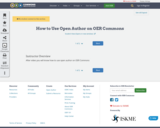
After video you will know how to use open author on OER Commons
- Subject:
- Social Work
- Material Type:
- Primary Source
- Author:
- Dung Nguyen
- Date Added:
- 09/02/2021

After video you will know how to use open author on OER Commons
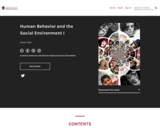
Word Count: 278237
(Note: This resource's metadata has been created automatically by reformatting and/or combining the information that the author initially provided as part of a bulk import process.)
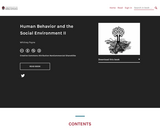
Word Count: 279491
(Note: This resource's metadata has been created automatically by reformatting and/or combining the information that the author initially provided as part of a bulk import process.)
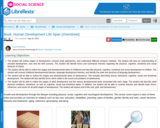
Growth and development through the lifespan including physical, social, cognitive and neurological development. This course covers topics in each of these areas and provides an overview on subjects such as day care, education, disabilities, parenting, types of families, gender identity and roles, career decisions, illnesses and treatments, aging, retirement, generativity, and dying.

This resource provides human services students with a general review and self-assessment of key terms related to diversity. This overview sets the foundation for advanced work on how to critically implement Human Services Code of Ethics Standards 10 and 11 in their work with clients. STANDARD 10 Human service professionals provide services without discrimination or preference in regards to age, ethnicity, culture, race, ability, gender, language preference, religion, sexual orientation, socioeconomic status, nationality, or other historically oppressed groups.STANDARD 11 Human service professionals are knowledgeable about their cultures and communities within which they practice. They are aware of multiculturalism in society and its impact on the community as well as individuals within the community. They respect the cultures and beliefs of individuals and groups.
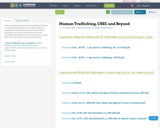
There are materials that we are asking the participants to copy and bring with them to the class. There are materials that the Resource Center will provide for participants and there are materials that we are providing to participants that we ask for them to review prior to the class that do not need to be printed.
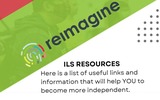
Here is a list of ILS Resources you can use.

Projeto de educação e cidadania desenvolvido para assistir jovens e adultos em situações de vulnerabilidades sociais. Estruturado em três frentes: Cursinho Social Pré-ENEM, Preparatório ao Exame de Ordem Unificado, da Ordem dos Advogados do Brasil (OAB) e Empreendedorismo Feminino - Mulheres amazônidas. O projeto é uma atualização das propostas socioeducativas desenvolvidas pelo Ministério Público do Trabalho da 8º Região (Pará e Amapá) e visa democratizar o acesso à educação, cultura e cidadania por meio do preparo ao mercado de trabalho.

The intersection of colorism and anti-immigrant thought in the modern day is rarely studied in classes. Our research has revealed that it is rampant both in conscious and unconscious opinions both on the wave of immigration across the southern border as well as other immigrants. This lesson plan is provided free of charge as a way to educate students to the dangers of the impact of colorist thought on some anti-immigration ideas and xenophobia.CC BY-SA 4.0
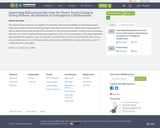
The purpose of this curriculum is to heighten the awareness and increase knowledge of child welfare workers, foster care providers, and school staff regarding the educational needs of foster children and to develop specific skills to address those needs and smooth the transition to new school environments in order to avoid unnecessary absences from school caused by transferring to a new foster home. The process requires a three-way collaborative effort between the caseworker, foster care provider, and school staff, and this curriculum provides clear, concise, and practicable actions for all of the responsible professionals to enable them to operate effectively as part of a collaborative team. (209 pages)Berrick, J. D., Ayasse, R. H. (2005).
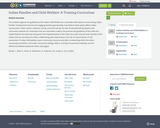
This module supports the guidelines of the Indian Child Welfare Act. It provides information on overcoming Indian families' fundamental mistrust and engaging families appropriately; how federal Indian policy affects Indian communities: Indian culture, traditions, family, and child rearing; the role of extended family systems and community networks for reservation and non-reservation Indians; the premise and guidelines of the ICWA and related federal and state laws that govern the implementation of the ICWA: the notion that the best interests of the Indian child are served by the tribes; collaborating with tribal workers; the role of cultural factors in risk assessment of Indian child welfare cases; community resources and skills in networking within the Indian community and within rural Indian community settings; skills in a variety of social work methods; and the differences between particular tribes. (236 pages)Becker, I., Daly, D., Gross, B., Robertson, G., Robinson, M., Casey, D., et al. (2000).
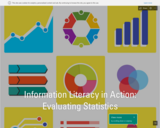
Can we really trust statistics? This post outlines suggestions for evaluating statistics.
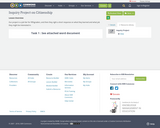
Our project is a job fair for fifthgraders, and then they right a short response on what they learned and what job they might be interested in.
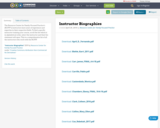
The Resource Center for Family-Focused Practice’s (RCFFP’s) instructors have years of experience and expertise in their respective fields. To find a specific instructor training your course, scroll the list which is in alphabetical order, select the instructor and their bio statement will open. This is a comprehensive list of all the instructors who work with the RCFFP.
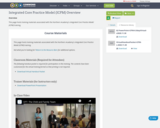
This page hosts training materials associated with the Northern Academy's Integrated Core Practice Model (ICPM) training.
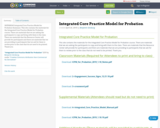
183FAM260 Integrated Core Practice Model for Probation
Summary: This site contains the materials for the Integrated Core Practice Model for Probation course. There are materials that we are asking the participants to copy and bring with them to the class. There are materials that the Resource Center will provide for participants and there are materials that we are providing to participants that we ask for them to review prior to the class that do not need to be printed. Thank you.
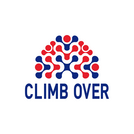
The present work (Integrating young (ex-) offenders into youth work) is the result of the Erasmus+ KA2 project "Climb Over", aimed at facilitating the reintegration of young offenders and preventing youth from making offences by making a good use of youth work.The paper contains useful guidelines for youth workers that want to carry out workshops and/or other activities in youth correctional facilities.
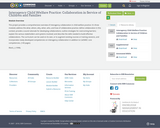
This project provides a comprehensive overview of interagency collaboration in child welfare practice: it's three modules address the what, where, why, when, who, and how of collaborative practice; define collaboration in this context; provide a sound rationale for developing collaborations; outline strategies for overcoming barriers; explain the various stakeholders and systems involved; and describe the skills needed to build effective collaborations. The curriculum can be used on its own, or to augment existing courses or training sessions, and incorporates newly developed competencies on interagency collaboration in addition to CalSWEC core competencies. (149 pages)Black, J. (1998).
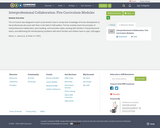
This curriculum was designed to teach social workers how to convey their knowledge of human development to the professionals who work with them in the field of child welfare. The five modules teach the principles of interprofessional collaboration, team building, communication styles, working with families in interprofessional teams, and addressing the interdisciplinary problems with which families and children have to cope. (188 pages)Rector, C., Garcia, B., & Foster D. (1997).
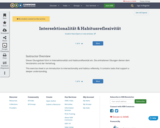
Dieses Übungsblatt führt in Intersektionalität und Habitusreflexivität ein. Die enthaltenen Übungen dienen dem Verständnis und der Vertiefung.This exercise sheet is an introduction to intersectionality and habitus reflexivity. It contains tasks that support a deeper understanding.